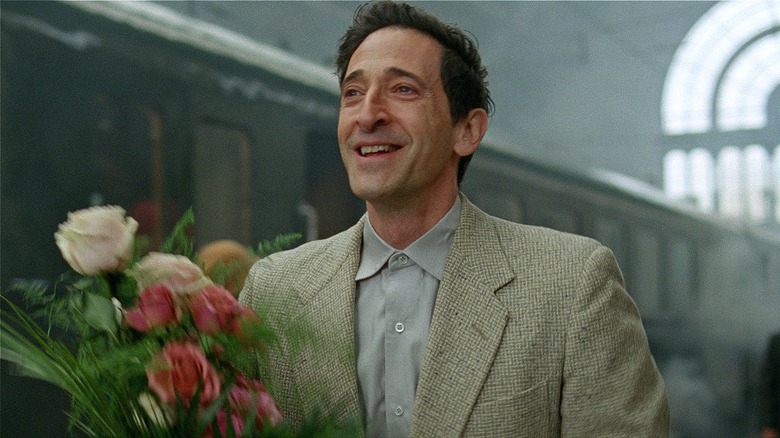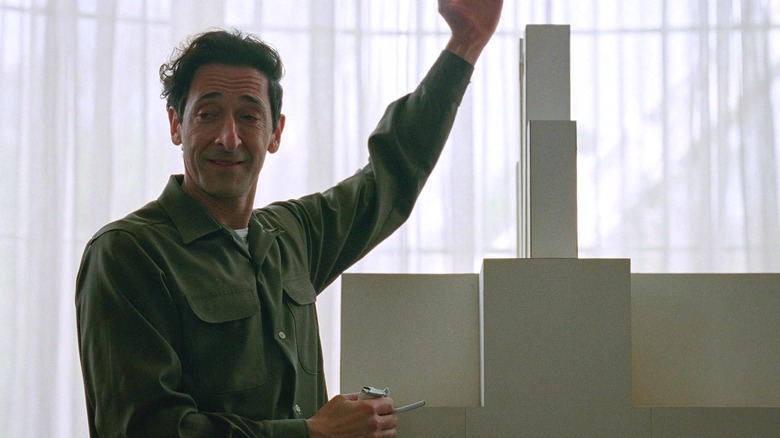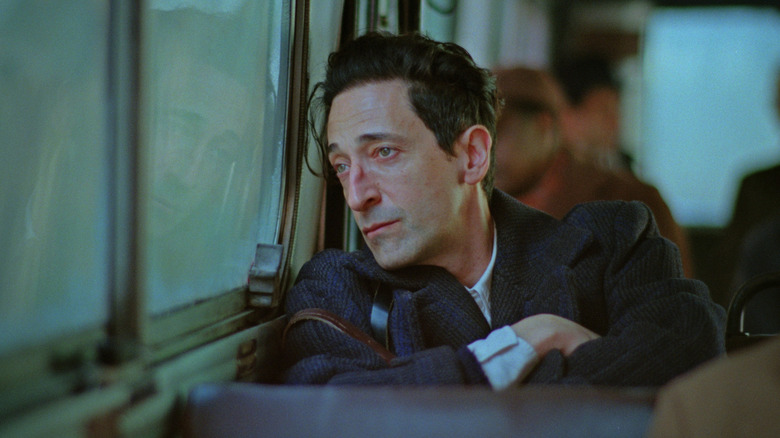Is The Brutalist Based On A True Story? The Real-Life Inspirations Behind László Tóth
"The Brutalist," Brady Corbet's 3.5-hour historical fiction drama, has been widely celebrated as one of the best movies of 2024. In her 10/10 review of "The Brutalist" for Looper, Audrey Fox praised the film as "an exciting new vision of the American epic film, which will no doubt cast a long shadow over cinema for years to come." The movie received 10 Academy Award nominations, winning three Oscars for original score, cinematography, and Adrien Brody's lead performance as László Tóth, a Hungarian Jewish architect who immigrates to America after surviving the Holocaust.
The believability of Brody's performance and the production's overall attention to detail left some viewers wondering whether "The Brutalist" was a true story. The 70mm roadshow screenings even gave away "biographical" brochures about László Tóth's work, further enhancing the feeling that this could be a real-life story of an actual artist. Could be — but isn't. The fact of the matter is that "The Brutalist" is an original work of fiction. Though Corbet and co-writer Mona Fastvold drew loose inspiration from various real people and events in crafting the script, it's not a close enough parallel to any singular influence to even say it's based on a true story.
Is László Tóth a real person?
There was no real brutalist architect named László Tóth. The protagonist of "The Brutalist" is an amalgamation of various mid-20th century architects, including Marcel Breuer, László Moholy-Nagy, Paul Rudolph, Ludwig Mies van der Rohe, and Louis Kahn. Brady Corbet told USA Today that the biography "Marcel Breuer and a Committee of Twelve Plan a Church: A Monastic Memoir," written by Hilary Thimmesh, "was one of the biggest inspirations" for the film's story. Both the historical Breuer and the fictional Tóth were Jewish architects hired to build Christian churches and struggling with bigotry in America.
However, there's a significant difference between all of the aforementioned real architects and Tóth: the former all immigrated to America before World War II, whereas Tóth arrived after. In their research, the filmmakers looked for examples of architects who survived the concentration camps but mainly found ones who didn't. Production designer Judy Becker used the work of those artists who died in the Holocaust as inspiration for Tóth's work. Mona Fastvold has explained, "It was our wish to try and pay tribute to them; that if someone had an experience similar to our main character's, we would be mindful in our depiction. But we couldn't find anyone (like Tóth)."
What did architects think about The Brutalist?
The way László Tóth's story closely resembles Marcel Breuer's in some respects while completely diverging from it in others is just one of many aspects of "The Brutalist" that has attracted some degree of controversy among architects. When you work in a specialized field, it can be frustrating to see entertainment about that field get things wrong; just as crime scene investigators have taken issue with "NCIS," some architects have been vocal in their hatred of "The Brutalist."
Objections have been raised over the film's depiction of the architect as a singular, uncompromising genius, a cliché that might make for exciting drama but ignores the reality of architecture as a field of collaboration and compromise. The film's epilogue, set at the 1980 Venice Architecture Biennale, has also been criticized for taking major liberties in its depiction of the atmosphere of the real event. In contrast to the serious adoration adbestowedorned on Tóth in the epilogue, brutalism was out of style in the architecture at the time and wouldn't be reappraised until decades later.
What did historians think about The Brutalist?
While the way "The Brutalist" handled architecture faced a mixed-to-negative reception from experts, the consensus on the film from other historians has been much more positive. The movie is perhaps best understood not as a story "about" architecture, but as one that uses architecture as a means to explore many other themes, including the American Dream, the struggles of immigrants, antisemitism, and the conflict between art and capitalism.
Jewish history professor Michael Berkowitz told BBC that "The Brutalist" is, "in some ways, more historical as a piece of fiction than a lot of more supposed factual narratives," noting how the film highlighted the widespread nature of antisemitism in 1940s America. László Tóth's journey rings similarly true to Adrien Brody in light of the real experiences of his Hungarian immigrant family members. "There was a lot that I could relate to personally," the actor told BBC, "my own mother and grandparents' struggles of fleeing the hardships of war and immigrating to the United States in the '50s, and the artistic yearnings to leave behind something of great significance with my work."



